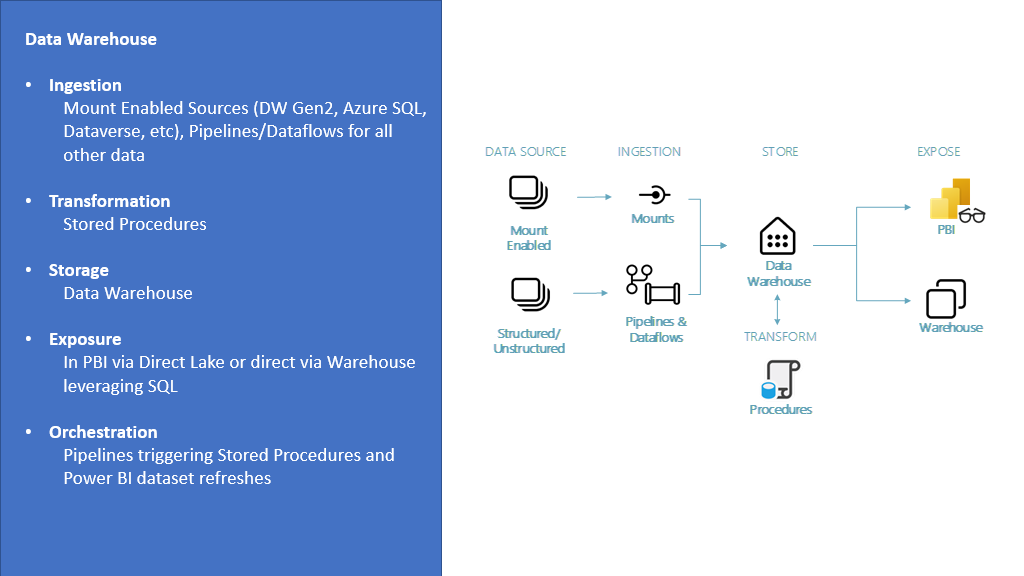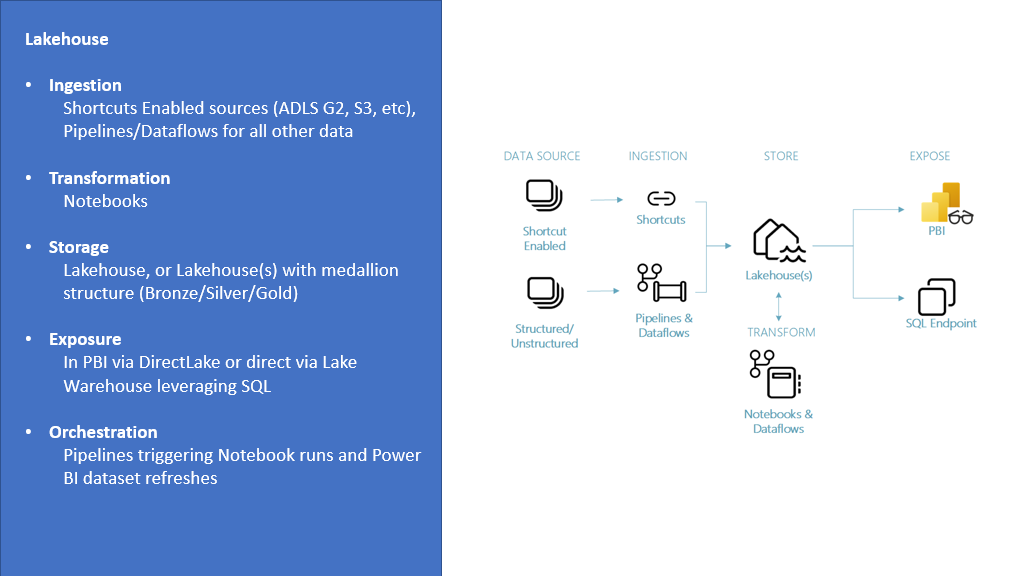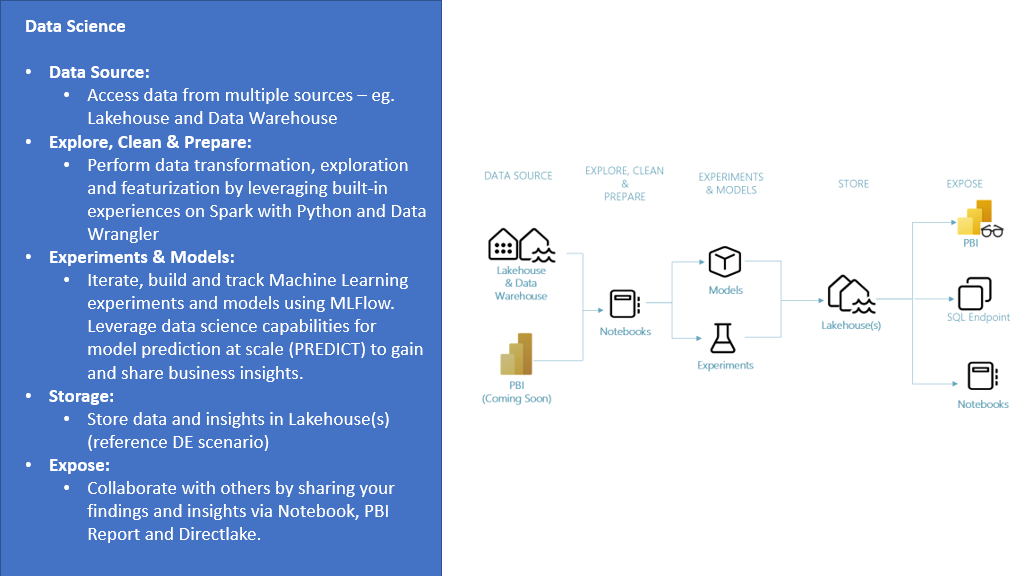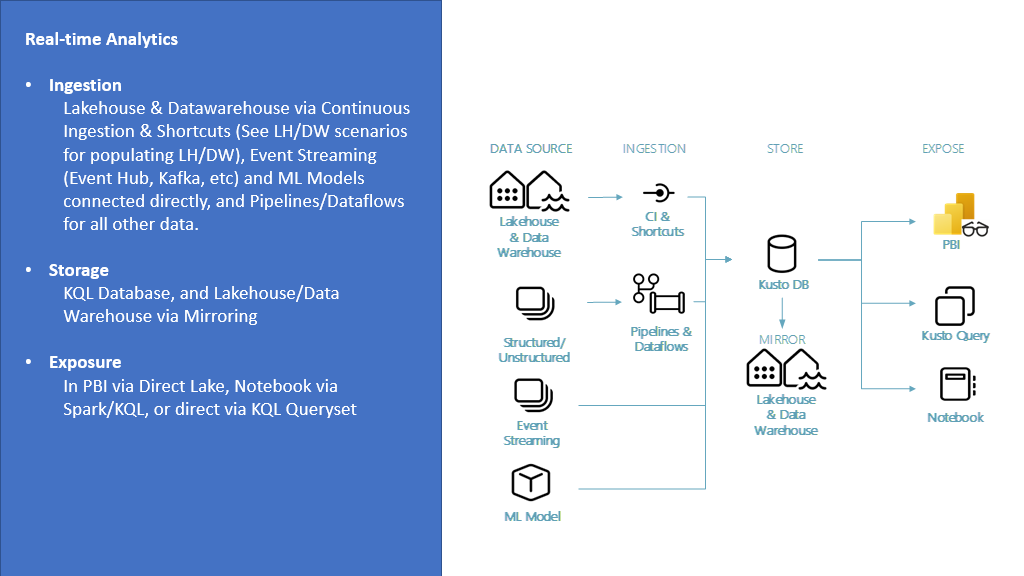Microsoft Fabric: The Data Superhero You Never Knew You Needed
Looking for the lowdown on Microsoft Fabric? Here it is:
Microsoft Fabric is a SaaS solution that will take your data to the next level. It’s like the data superhero you never knew you needed!
Fabric can help you:
- Break down data silos and create a unified view of your data.
- Reduce duplication and save resources.
- Empower everyone from developers to data scientists.
- Get more insights from your data faster.
The Data Superhero
Data silos are the kryptonite of every organisation. But Fabric is here to save the day!
Fabric centralises data and processing, giving you a single platform for all your data needs. It also provides a unified data store called OneLake, as well as tools for different user personas, including:
- Data Factory
- Synapse Data Engineering
- Synapse Data Science
- Synapse Real Time Analytics
- Power BI
- Data Activator
And all of this is supported by OneSecurity, the data guardian.
But what really makes Fabric a superhero is its power and scalability. Fabric uses serverless compute, which means that it can instantly respond to your activity, no matter how much data you have or how complex your workloads are.
The launch and what it means for you
The launch of Fabric means that any organisation with an Office 365 (providing they hold the appropriate license) or a P1 SKU license can start using Fabric straight away.
Fabric is suitable for organisations that already have a data platform and wish to modernise, take advantage of the Fabric approach, or want to start building out their capability.
It gives you the chance to experiment with fabric proof of concept or prototypes, gaining insights into how it can enhance business value for you.
For people transitioning from Power BI, Fabric is continually being developed based on feedback with new innovations, such as co-pilot. So, you can be confident that it’s fit for purpose and is always up to date and can help you achieve your goals.
What you need to get started with Fabric
With the Fabric trial, you are free to start exploring Fabric at no additional cost.
The best way to get started is to look at the Microsoft Learning Path and identify data use cases in your organisation and how these achieve your data goals.
No additional skills or capabilities are required as the Fabric experience focuses on enablement rather than the technical side of provisioning and toolset planning.
Many of our customers like Wirral council have been interested in Fabric prior to its general launch and have already started using it out of the box to create data workloads for their different scenarios. However, as we discussed earlier, it is still necessary to configure workspaces, set up OneLake (the data management approach) and OneSecurity in line with your organisation’s approach to data.
Simpson Associates have therefore created a Fabric Accelerator, powered by Microsoft Fabric to help organisations get going, ensuring they are set up for success.
This is a package of essential activities and tasks that will help you get started with Fabric. This involves best practice setup and configuration, plus implementation of a data workload from source to reporting.
The package can be flexed to incorporate OneSecurity, Governance, and additional workloads as well as AI Proof of Concepts.
In addition, we can give advice on suitability and offer a number of assessments identifying gaps and create a road map that is either tactical or more strategic. This can involve translating the current capability into the fabric approach.
Data Warehouse Scenario
Users: SQL developers/analysts
With Fabric, you can create a data warehouse in the user-friendly interface, setting up the instance within a few minutes. You can then create tables and structure the data warehouse in accordance with your needs.
To ingest data into the data warehouse you can use data factory within Fabric. This has the same capability as Data Factory in Azure and includes both dataflows and pipelines allowing you to have choice of ingestion and transformation tools within the same interface.
The key advantage of Fabric is that the data is all ultimately stored in Parquet format in one unified OneLake, enabling you to take advantage of Direct Lake connectivity in Power BI.

Lakehouse end-to-end Scenario
Users: Developers, Data analysts, Data Engineers
Using a modern Lakehouse approach means that the data sits centrally in the Lake and only needs to be ingested once and then transformed and shared for the workloads using a schema on read approach to warehousing.
This means all users can access the same data, collaborate, and share data assets. By eliminating the need to copy data for each user, Fabric establishes a single source of truth, ensuring that everyone works with the same consistent data, eliminating the risk of data silos and inconsistencies.

Data Science Scenario
In either the Lakehouse or data warehouse approach, data is in a great position to leverage the Machine Learning (ML) capabilities of Azure. Data can easily be cleaned and prepped using Notebooks and used in ML experiments.
The experiments can be tracked using MLFlow and as this is all done within Fabric. All data recorded about ML model performance is available to further use and visualise in Power BI.

Real-time Analytics Scenario
Users: Analysts, Developers, citizen data users
This process streamlines data integration and the complexity of real-time analytics to provide live data accessible to all users.
Fabric having the end-to-end tools required means you can also be confident in the reliability and robustness of the solution without having to worry about integrating separate tools.
Once data is ingested into Fabric using KQL, it will be available automatically in OneLake and will be available for the different workloads.

Summary
Whilst you still need to establish your data management approach and complete data engineering, reporting, and data science tasks, Fabric provides a solid foundation to help you achieve your goals efficiently and offers the following benefits:
- Minimised infrastructure setup requirements, saving you both time and money.
- Best in class performance thanks to the use of serverless compute and Parquet storage.
- Stand up the infrastructure, either Cloud landing Zone and resources or on-premises infrastructure and configure all the components.
- The OneLake and Direct Lake approach means reduced movement and duplication, making the process more reliable and reducing cost.
With data sitting centrally, this creates an environment for collaboration between teams, the sharing of data assets and an overall stronger data culture.
No additional skills are required. Governance and security can now be centrally managed making it easier to enforce data policies and rules.
Ready to get started with Fabric?
Try Fabric today with Microsoft’s free Fabric trial. Or ask us about our Microsoft Fabric consulting services like Fabric Accelerator to get started on your journey quickly and easily. Contact us via our Live Chat and one of our experts will be in touch.
Learn more about Fabric by reading our series of blogs:
Fabric Wrapped: FabCon Day 4 & 5
Microsoft Fabric database management
Must know fabric features from FabCon


